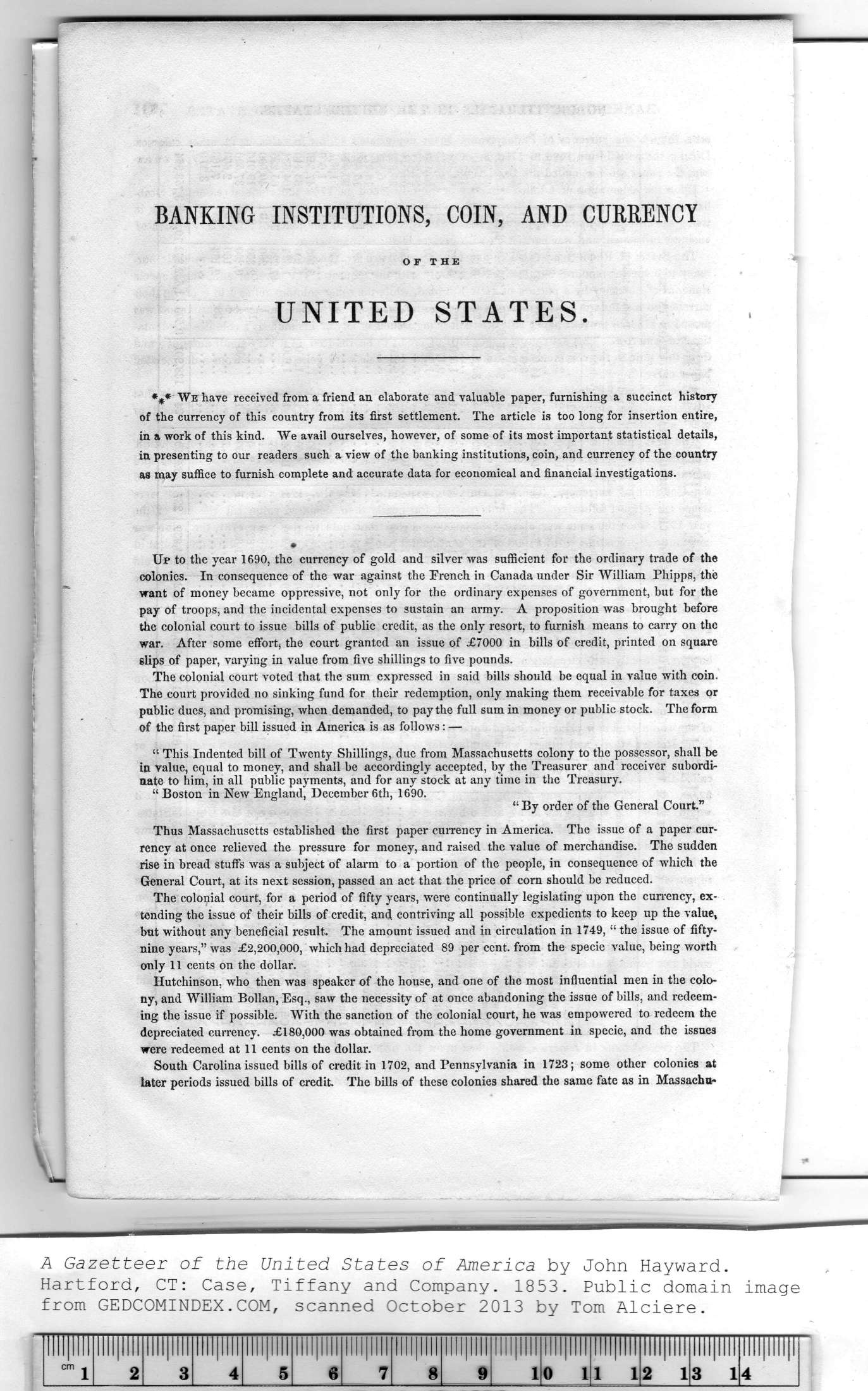Click on the image for a larger version suitable for printing. HOME PAGE ... REFERENCE PAGE ...THIS GAZETTEER’S PAGE |
 |
|
Note: Ctrl and + increases the font size of the text below, Ctrl and - decreases it, and Ctrl and 0 resets it to default size. BANKING INSTITUTIONS, COIN, AND CURRENCY %* We have received from a friend an elaborate and valuable paper, furnishing a succinct history j Up to the year 1690, the currency of gold and silver was sufficient for the ordinary trade of the I colonies. In consequence of the war against the French in Canada under Sir William Phipps, the j * want of money became oppressive, not only for the ordinary expenses of government, but for the • pay of troops, and the incidental expenses to sustain an army. A proposition was brought before the colonial court to issue bills of public credit, as the only resort, to furnish means to carry on the The colonial court voted that the sum expressed in said bills should be equal in value with coin. H public dues, and promising, when demanded, to pay the full sum in money or public stock. The form of the first paper bill issued in America is as follows: — “ This Indented bill of Twenty Shillings, due from Massachusetts colony to the possessor, shall be “ Boston in New England, December 6th, 1690. “ By order of the General Court.'' Thus Massachusetts established the first paper currency in America. The issue of a paper cur- The colonial court, for a period of fifty years, were continually legislating upon the currency, ex- Hutchinson, who then was speaker of the house, and one of the most influential men in the colo- South Carolina issued bills of credit in 1702, and Pennsylvania in 1723; some other colonies at V A Gdzetteer of the United Stdtes of Americd by John Hayward. Hartford, CT: Case, Tiffany and Company. 1853. Public domain |